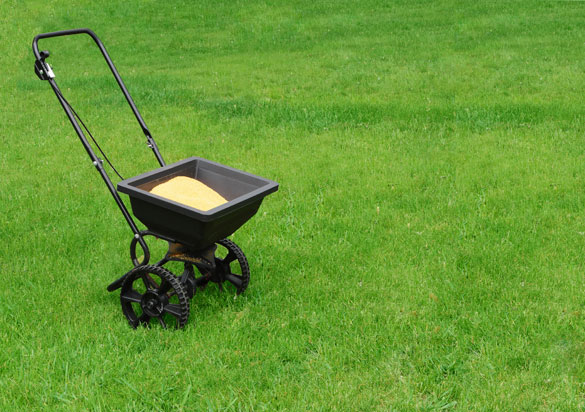A typical lawn fertilization schedule includes regular applications from April through to October. Lime plays a vital role in those applications, especially as autumn descends on Massachusetts's lawns. Find out why your lawn needs lime this fall and how this essential fertilizer improves the health and appearance of turf.

Altering the Composition of Your Soil
Grass thrives in neutral soil, not too acidic or too alkaline. Most experts agree that a neutral pH balance of around 7.0 provides optimum conditions for growth.
Natural soil conditions tend to become more acidic as time progresses. Nitrogen fertilizers, rainfall and other sources of acid knock down the pH balance and block the use of vital plant nutrients.
Restoring the pH balance in your soil will improve growing conditions for both cool and warm season grasses. A soil analysis or pH test will indicate acid levels in the soil, and regular applications of fertilizer and nutrients will help to retain a healthy balance.
The Importance of Lime
Lime is a natural way to restore pH levels in soil, and can be easily applied over yards of any size. Landscape lime comes in powdered form or pellets; your landscaper may have a preference, but both work well. Powdered lime produces more dust, but pellets tend to be more expensive.
Calcitic limes have higher levels of calcium, while dolomitic lime combines both calcium and magnesium. Your landscaper will analyze the soil tests results to decipher which type of lime is required.
Water your lawn post-application to ensure absorption into the soil. Fall rains will help this process, and applying lime late in the year takes advantage of ideal natural conditions.
Make sure your Massachusetts lawn is healthy all year round by scheduling an appointment with your landscaper for a soil test and lime application. Restore optimum soil conditions to create a lush, green landscape, with lime as your not-so-secret weapon.

 781-646-5555
781-646-5555